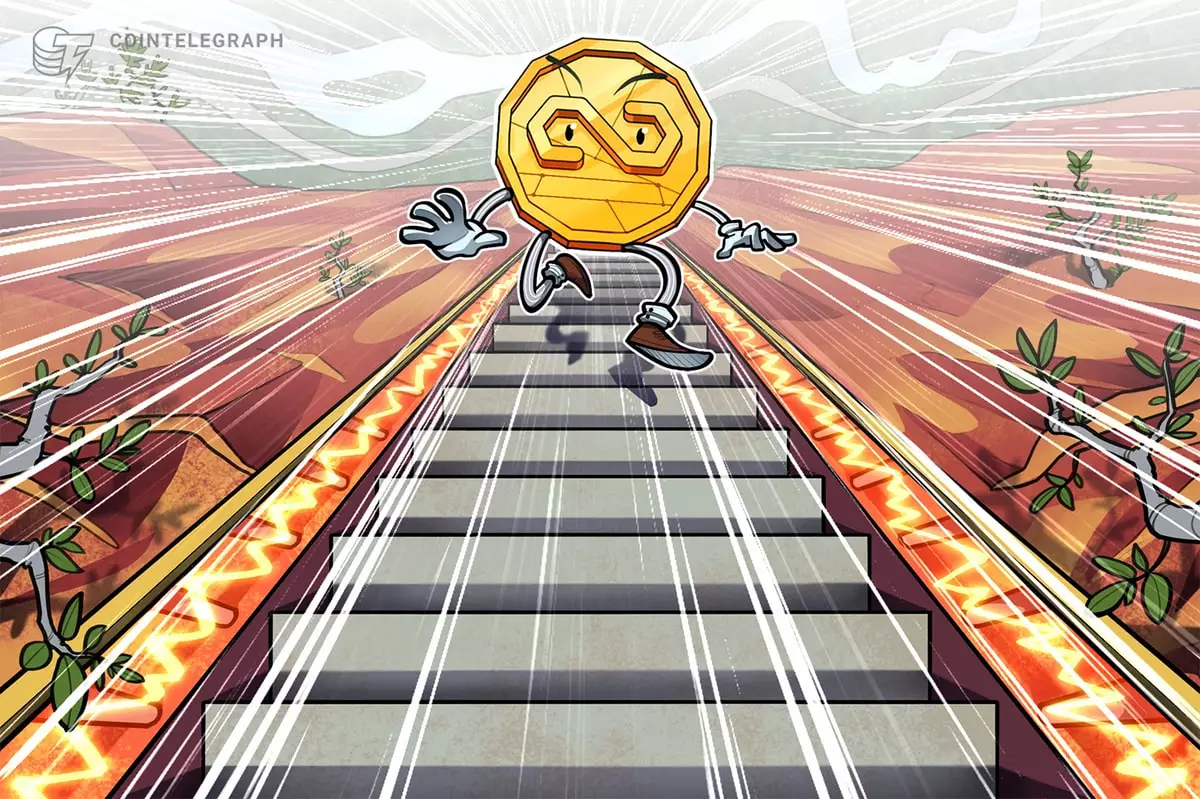Real estate-backed stablecoin USDR recently faced a significant setback as it lost its peg to the U.S. dollar. The project team behind USDR, Tangible protocol, revealed that a rush of redemptions caused a draining of liquid assets, particularly Dai (DAI), from its treasury. USDR, a decentralized finance project that seeks to tokenize housing and other real-world assets, is primarily traded on the Pearl decentralized exchange (DEX) running on Polygon.
In a tweet on October 11, Tangible protocol explained that all the liquid DAI from the USDR treasury was redeemed within a short period, resulting in an accelerated drawdown in the market cap of the stablecoin. The team added that the lack of DAI for redemptions triggered panic selling, ultimately causing the depegging of USDR.
This sudden flood of selling drove the price of USDR down to as low as $0.5040 per coin, although it subsequently recovered slightly to around $0.53. Despite this significant loss in value, the developers of the project expressed their commitment to finding solutions, stating that it was primarily a liquidity issue affecting redemptions. They emphasized the existence of real estate and digital assets backing USDR, assuring that these assets would be utilized to support redemptions in the future.
Although the liquidity crisis impacted the USDR treasury, the official website of the app stated that the remaining assets still held higher value than the entire market cap of the coin on October 11. A significant portion of USDR’s collateral, around 14.74%, consists of Tangible (TNGBL) tokens, which form part of the coin’s native ecosystem. The remaining 85.26% of collateral is supposedly backed by real-world housing and an “insurance fund.”
Stablecoins, as the name implies, are significant attempts to maintain a stable value of $1 on the open market. However, these stablecoins sometimes face challenges with their pegs, especially during extreme market conditions. A notable example is the case of Circle’s USDC, the sixth-largest cryptocurrency by market cap as of October 11. On March 11, when several banks in the U.S. went bankrupt, USDC fell to $0.885 per coin. Fortunately, it managed to regain its peg by March 14. On the other hand, Terra’s UST stablecoin lost its peg in May and has yet to recover, with its value currently at $0.01 per coin according to Coinmarketcap data.
The phenomenon of asset tokenization is rapidly reshaping the traditional status quo within various sectors such as insurance and real estate. Tokenization allows for the representation of real-world assets in digital forms, enabling increased liquidity and accessibility. Despite the challenges faced by stablecoins like USDR, the concept of tokenizing assets continues to hold promise for revolutionizing how assets are owned and traded. As the DeFi space evolves, it is crucial to address the liquidity challenges and ensure that stablecoins maintain their pegs to fulfill their intended purpose of providing stability in the volatile cryptocurrency market.
USDR’s recent loss of peg to the U.S. dollar highlights the liquidity crisis faced by the real estate-backed stablecoin. The team behind the project remains optimistic about finding solutions and utilizing the real assets backing USDR for future redemptions. The incident also serves as a reminder of the inherent volatility of stablecoins and the importance of asset tokenization in reshaping traditional industries. As the crypto market continues to evolve, it is necessary to navigate the challenges and strive for stability in the ever-changing landscape of digital assets.

